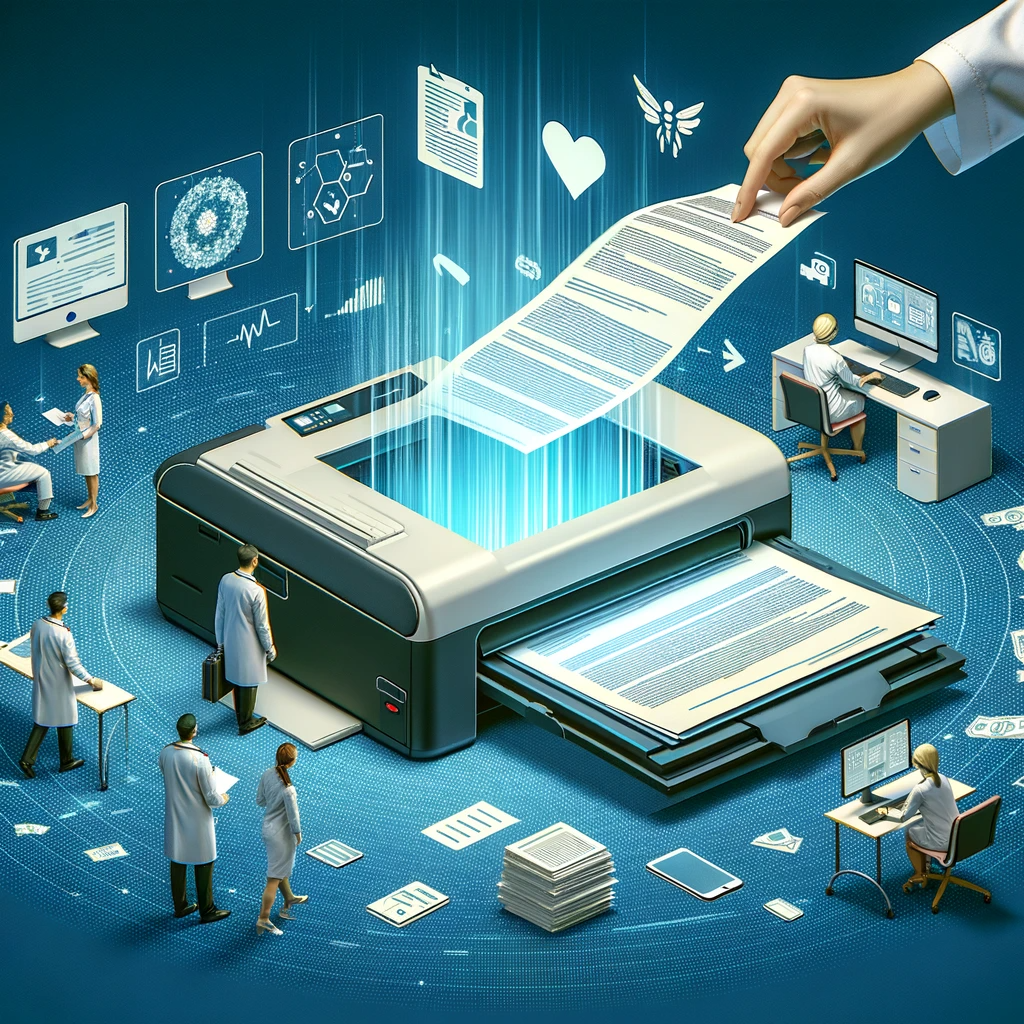How technology can aid nurse efficiency and mitigate the Great Resignation
Digitization and AI integration are among the capabilities that health organizations use to improve efficiency for nurses and support the quality of care.

Nurses are the backbone of our healthcare system. They raise the quality of care delivered to patients and keep healthcare organizations running smoothly. However, the pandemic triggered a historic nursing shortage, which continues to threaten the quality of patient care.
According to a study by the National Council of State Boards of Nursing, about 100,000 registered nurses left the workforce during the past two years because of stress, burnout and retirement, with another 610,388 reporting an intent to leave nursing entirely by 2027.
The Great Resignation is no longer trending in corporate America, but it’s still very much an issue across the healthcare industry, with nurses and other healthcare workers leaving the profession in droves.
While it’s going to take time and investment to reverse course on the nursing shortage, there is some good news. McKinsey reports that as many as 20 percent of the time spent on each nursing shift can be optimized through technology enablement. It’s clear that healthcare organizations (HCOs) focused on delivering a patient-centric experience – balanced with lightening the load on stressed and overworked nursing staffs – must embrace technologies that will help them achieve these goals.
Leaning into digitization
Dealing with the massive amounts of paper documentation – lab tests, doctor’s notes, vitals and the like – is the most time-consuming part of every healthcare worker’s job. Digitizing paper documentation can transform the entire records process, both onsite and off.
By leveraging the latest document scanner technology, HCOs can decrease the workload for staff and nurses, minimizing delays in patient care related to offsite record retrieval and lowering the potential for care-related errors, which could pose legal issues.
The goal of digitization is to reduce manual processes so nurses and healthcare workers can focus on what really matters – their patients. In addition to increasing productivity, HCOs can leverage document imaging scanners and auto classification technology to reduce the potential for human errors.
For example, Seattle-based Swedish Medical Center uses a combination of fi-series scanners to give healthcare staff the option of scanning directly to PDF, file, print or batch, and integrating with their EMR. This powerful solution helped Swedish’s staff to overcome the inefficiencies of massive amounts of paper they must process daily. This approach also enabled center staff to digitize and upload over 4 million pages of documentation to patient EMRs, eliminating the need for photocopying and faxing – thus saving valuable time and resources.
Digitization future-proofs HCOs
Healthcare providers can also use document imaging scanners to reduce their reliance on paper records, improve data accuracy, enhance patient care and streamline administrative processes.
More than just saving healthcare workers time and helping them make the most of their shifts, document imaging scanners are an important step on the path to modernizing healthcare organizations’ IT infrastructure. Moving towards digitization will become increasingly important as more and more HCOs begin to tap into the power of AI and GenAI. Bottom line – document imaging scanners make paper-based information available to the digital age.
Oracle addresses this trend with its new Clinical Digital Assistant which provides a set of GenAI services within its EHR solutions portfolio for HCOs. The goal of the digital assistant is to streamline administrative tasks to reduce manual work and documentation burden, enabling staff to focus more on patient care.
The time savings attributed to document imaging scanners can be substantial, but does vary based on several factors, including the size of the healthcare organization, the ability for nurses and staff to easily use the devices with minimal training, and of course, the volume of documents processed daily or weekly.
For example, Sharp HealthCare is a large San Diego not-for-profit healthcare system with four acute-care hospitals, three specialty hospitals and 19,000 employees. Sharp uses a combination of fi-series scanners and software to scan patient ID cards, charts, insurance cards, admittance paperwork and other content that comprises each patient medical record. The scanners connect to Sharp’s enterprise content management software so every time a Sharp employee scans a document, the image is quickly and automatically populated to the system and made available for viewing within moments. The amount of paper records that Sharp scans is massive – about 600,000 images weekly.
Staff at Sharp HealthCare and Swedish Medical Center are leveraging document imaging scanners in a variety of ways to use their time more efficiently, including:
Quick and easy access to digitized documents, reducing the time it takes to search for and retrieve patient records, test results and other critical information. This is especially important when many paper records are stored off-site.
Reducing time spent on data input through elimination of manual data entry and transcription of handwritten notes or documents which also reduces the risk of human error and saving time that would otherwise be spent on data input.
More rapid sharing of medical records, facilitating better collaboration among healthcare providers to boost the quality of care by reducing the time it takes to consult with specialists or make referrals.
Digital record keeping for easier maintenance, updating, archiving and managing historical records.
Scott Francis is technology evangelist at PFU America.